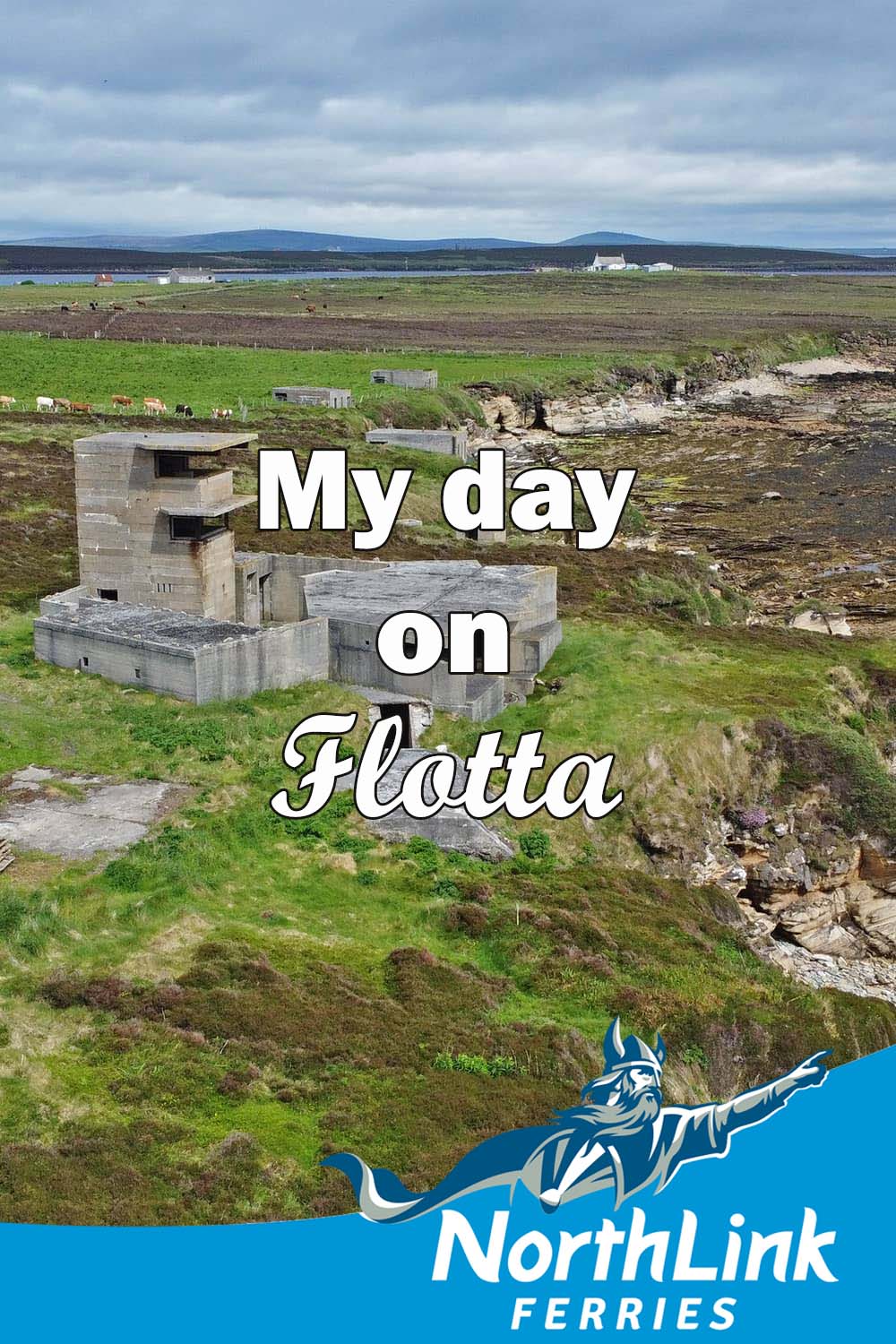My day on Flotta
Though most Orkney islands have changed over the years, perhaps none have as dramatically as Flotta. During wartime, the island’s coast was loaded with gun batteries and watchtowers. Then in the seventies, an oil terminal (the second largest serving the North Sea) was built in Flotta. These days, the long silhouette of a tanker bound for Flotta, and the facility, with its flare burning brightly, can be seen from all over Orkney.
Flotta is located at Scapa Flow’s southern entrance, so coastal batteries and searchlights were constructed on the island. Flotta, with its quiet farming community, suddenly became a huge army camp, crammed with garrison troops.
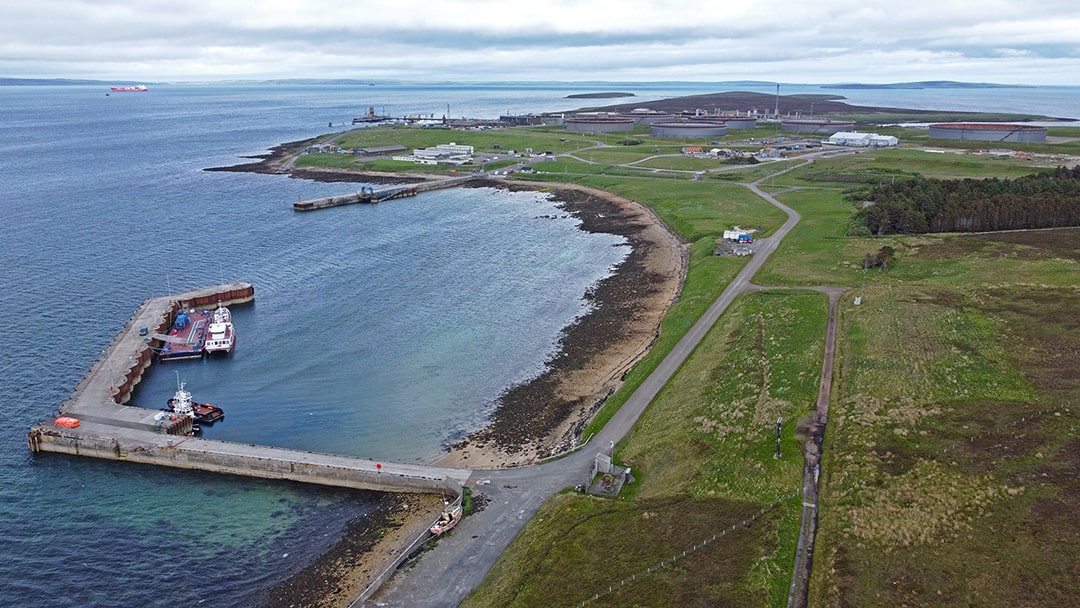
It’s fair to say that Flotta is not well visited, perhaps because it looks from a distance like the oil terminal takes up a significant portion of the island, and perhaps because the picturesque island of Hoy is so close. However, I decided to visit Flotta in June, and had a happy time discovering all the island had to offer. It’s the perfect size to walk around in a day.
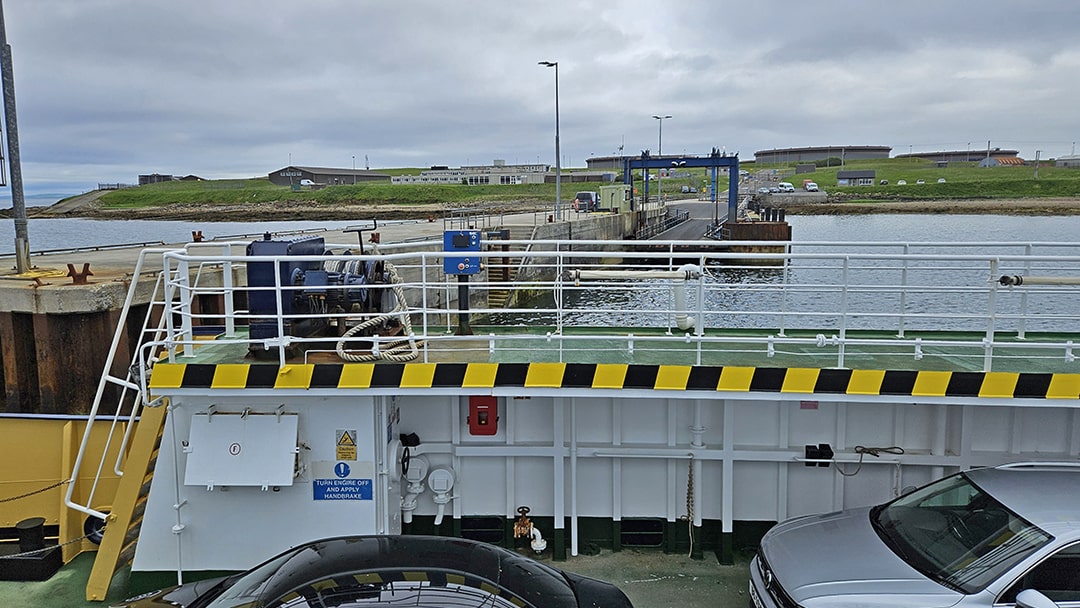
Flotta is served by a ferry from Houton in Orphir, which stops briefly on the island before heading onwards to Lyness in Hoy. Shortly after arriving at the pier, I reached the gates of the oil terminal. Vast oil storage tanks lay beyond the fence; there’s a portion of the island which is only accessible to terminal staff.
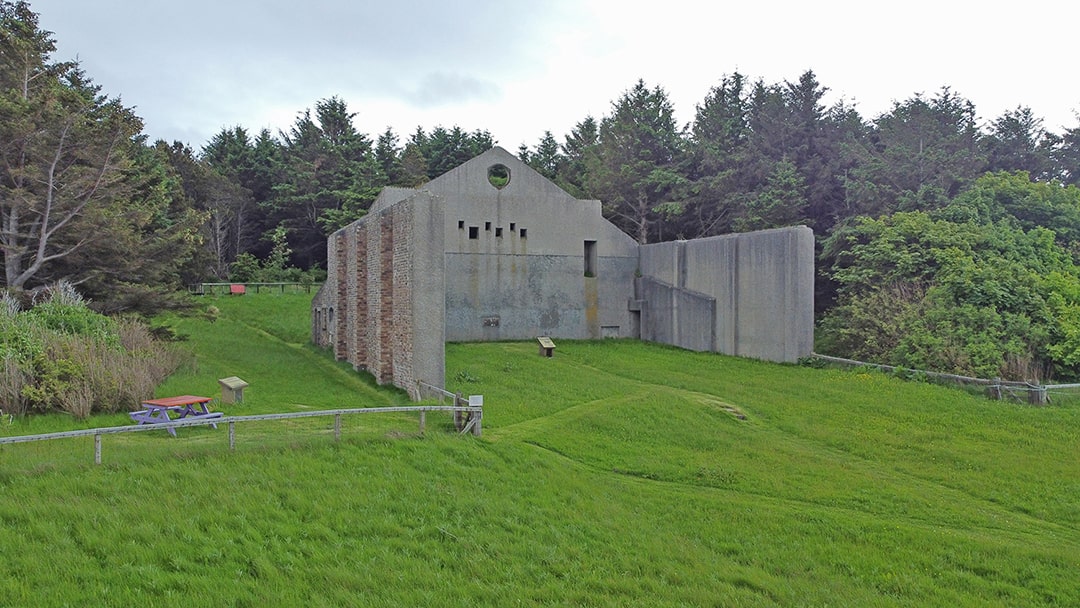
Instead, I followed the island road, and, after just a couple of hundred metres made my first stop, at the old wartime cinema.
During WW1 and WW2, Scapa Flow in Orkney was the perfect anchorage for the British Naval Fleet. It is a large, sheltered area of sea, surrounded on all sides by islands. To protect the fleet, defences against enemy attack had to be built on the approaches to Scapa Flow.
Flotta is located at Scapa Flow’s southern entrance, so coastal batteries and searchlights were constructed on the island. Flotta, with its quiet farming community, suddenly became a huge army camp, crammed with garrison troops.
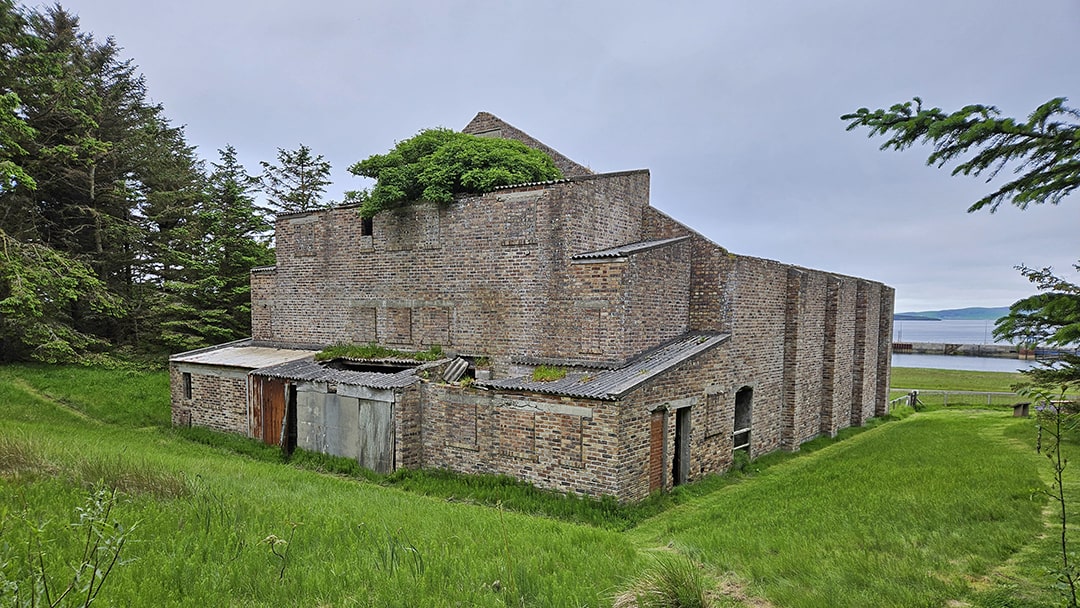
Recreational facilities were constructed, and amongst these, the cinema, which once entertained 1,500 men and women of the armed forces. I enjoyed finding the hole in the wall that the projector once sat behind, and the ledge marking where the balcony began. The cinema was previously surrounded by other buildings for the troops, including a gymnasium and dance hall. Following the war, the roof was removed and used on a Kirkwall garage, and the cinema became a sand store.
Surrounding the cinema is some woodland, unusual for Orkney, and I loved listening to birdsong for a minute or two. These trees were planted during WW2, with more added during the construction of the oil terminal. Stories from the past suggest that, occasionally, some trees were removed in December. Due to being blasted by wind, the trees didn’t have branches on one side, making them perfect Christmas trees to fit against a sitting room wall!
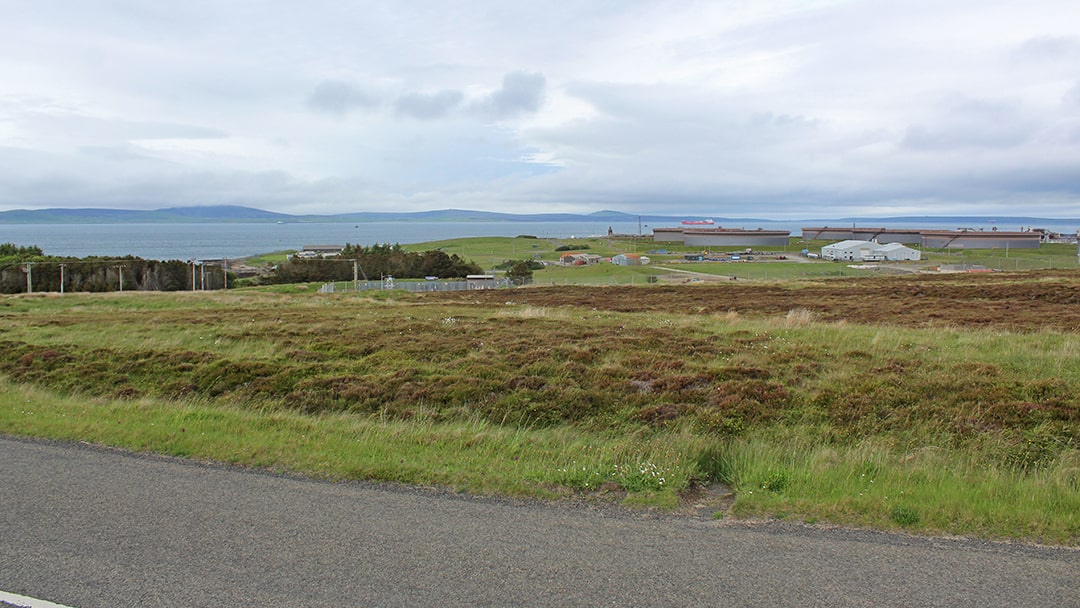
The road into Flotta’s interior leads uphill, where there was a great view of the Flotta oil terminal. Since the facility came online in 1977, it has brought great economic benefits to Orkney. Several of my friends’ parents were employed there. The Flotta terminal receives crude oil from offshore installations through a subsea pipeline, which is an amazing 135 miles long! Impurities are removed and gases are extracted before the oil is pumped into tankers and shipped away. 10% of the UK’s oil output is treated here!

Having previously only seen the 223-foot tall Flotta flare from afar, I was fascinated to see its flame up close. The flare is a safety system which protects pipework and equipment from over-pressurising. I was struck by the noise it made; a whooshing sound that can be heard across the island.
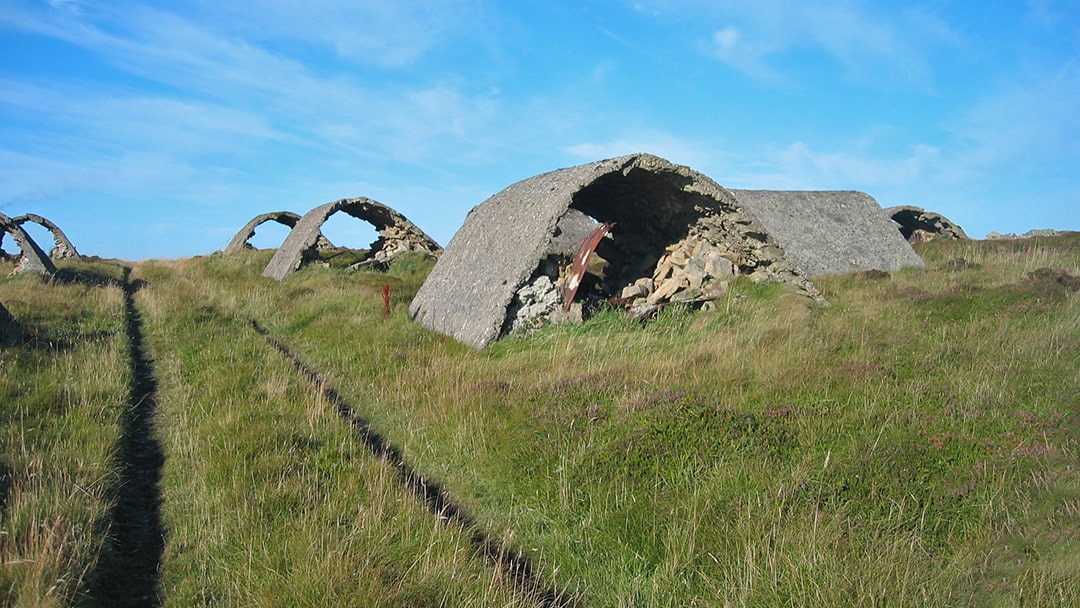
As I continued along the road, I discovered a gate which leads to Golta. A call to the terminal security team is required to access this area, which lies beyond the oil terminal. Golta is home to the Roan Head Z Battery, and, during WW2, the world’s first surface-to-air missiles were tested here, to be used against enemy aircraft. Now 132 crumbling concrete shelters (to protect the gun crews) remain, set out in a grid. I would have dearly liked to have visited the rocket battery but reasoned that I might not have enough time.
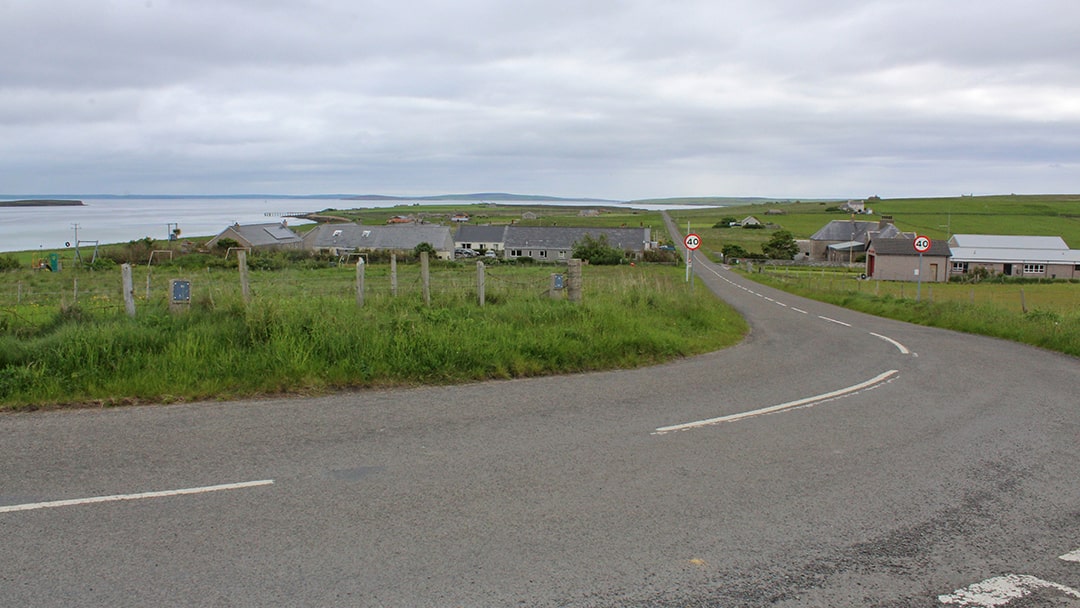
So I walked on, and passed a little settlement with a shop, school, community centre (which contains an intricately detailed mural of Flotta life) and a small playpark. I said hello to a Flotta resident tending to her garden.
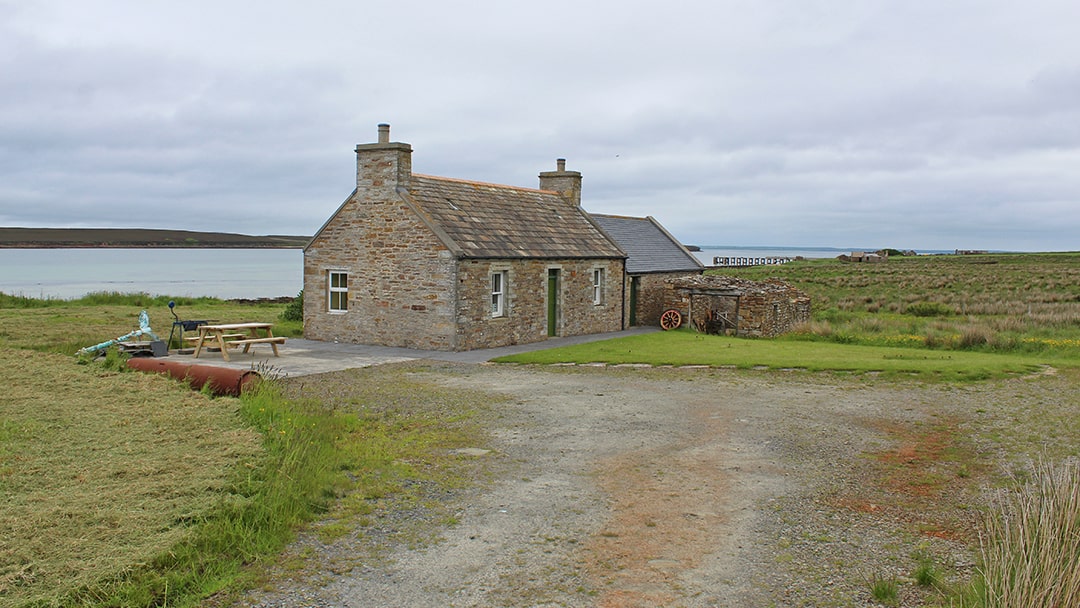
Eventually I reached the Flotta Heritage Centre. There’s a wealth of items, information and photos here relating to the island, and to farming, shipping, peat cutting, the war and the oil terminal.
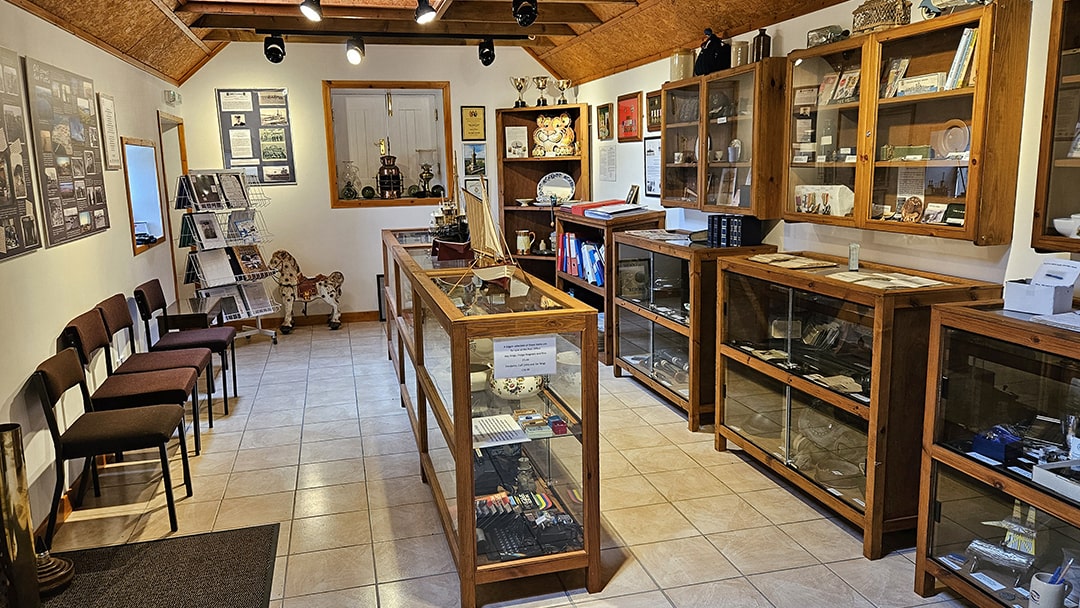
I was quite taken by the Esso tiger which once decorated an island petrol pump and encouraged customers to ‘Put a Tiger in Your Tank’!
Attached to a house near Flotta Heritage Centre is a wartime building known as ‘the silent cabin’. From this hut, sailors wearing headphones would listen to underwater microphones for the telltale sounds of a submarine in Scapa Flow. In 1918, the enemy submarine UB116 was detected advancing towards the British Fleet. The sailors in the silent cabin detonated a minefield as the U-boat tried to sneak past, sinking the submarine and its crew.
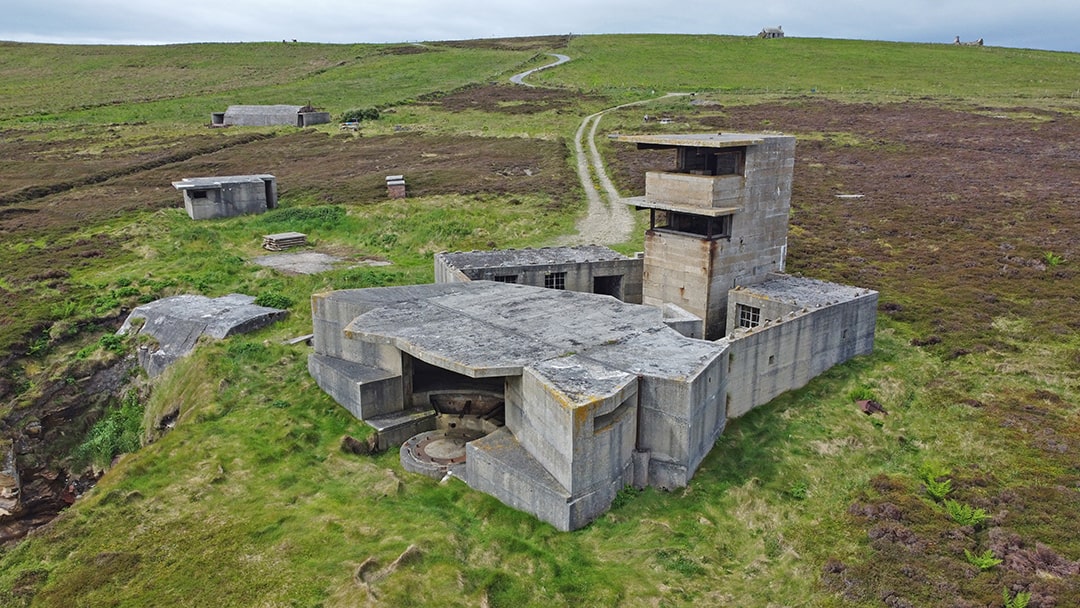
A little further round the coast, Buchanan Battery faces out to sea, and was once armed with rapid-firing, ship-sinking guns. Named after Lieutenant Colonel Fred Buchanan, this is one of the best-preserved coastal batteries I’ve seen. As I wandered around the maze of concrete buildings (including the director tower, observation post, spotlights, engine house and magazine) a small creel boat puttered in the water nearby.
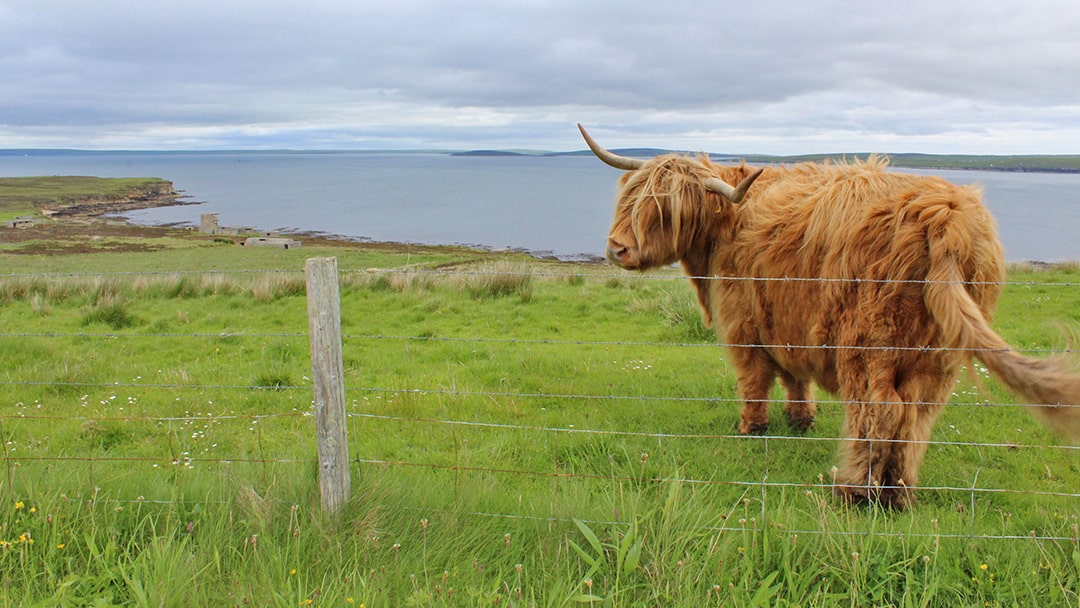
I wheezed up a steep hill, passing two friendly Highland cows, and the tall Port War Signal Station at Stanger Head came into sight. On an already tall cliff, this building looks like a skyscraper compared to the rest of Flotta (the island name comes from the Old Norse ‘flat isle’).
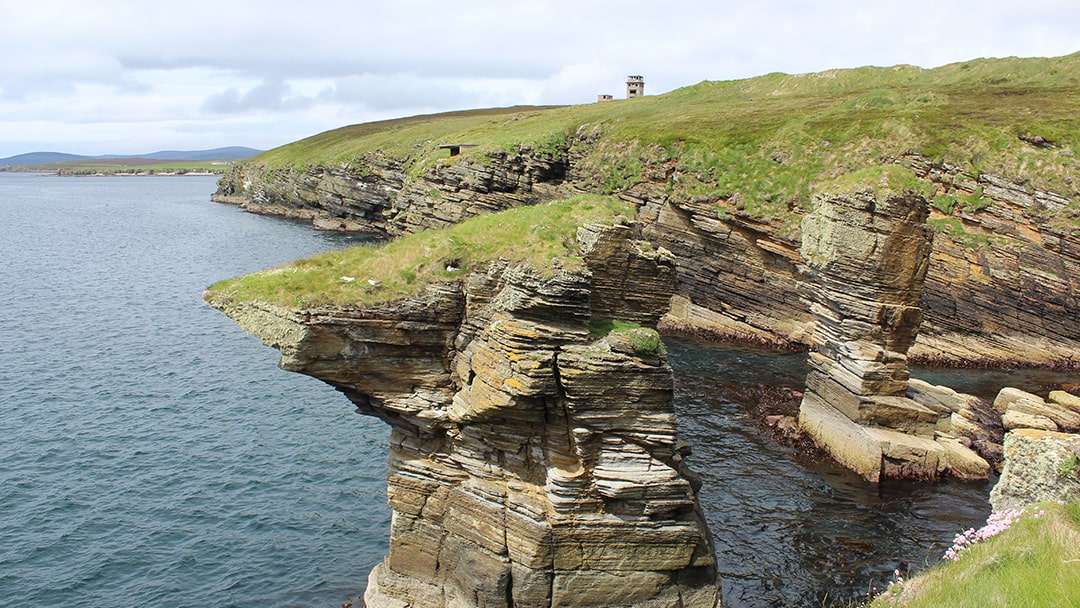
I was aware that there were two sea stacks nearby, so I went looking for them first, passing a disused quarry. I later learned that stone used to build the oil terminal was quarried here.
Amidst the grassy slopes, sea pinks and low cliffs I found the pair of sea stacks known as the Cletts. One was shaped like an anvil. A friend once told me that this was one of their favourite spots in Orkney for shore fishing.
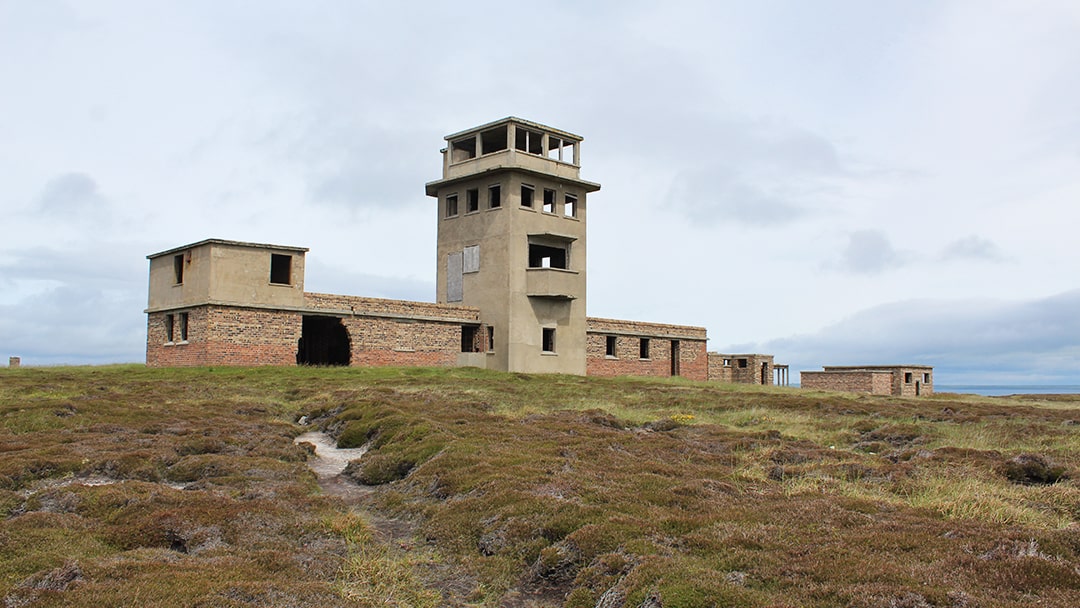
After a hike through some uneven ground (at one point I fell over and nearly left my glasses behind!) I reached the Port War Signal Station at Stanger Head, which is very impressive. With a commanding view over the main entrance to Scapa Flow, it was responsible for co-ordinating wartime shipping movements and operating as fire command for gun batteries in Flotta and South Ronaldsay.
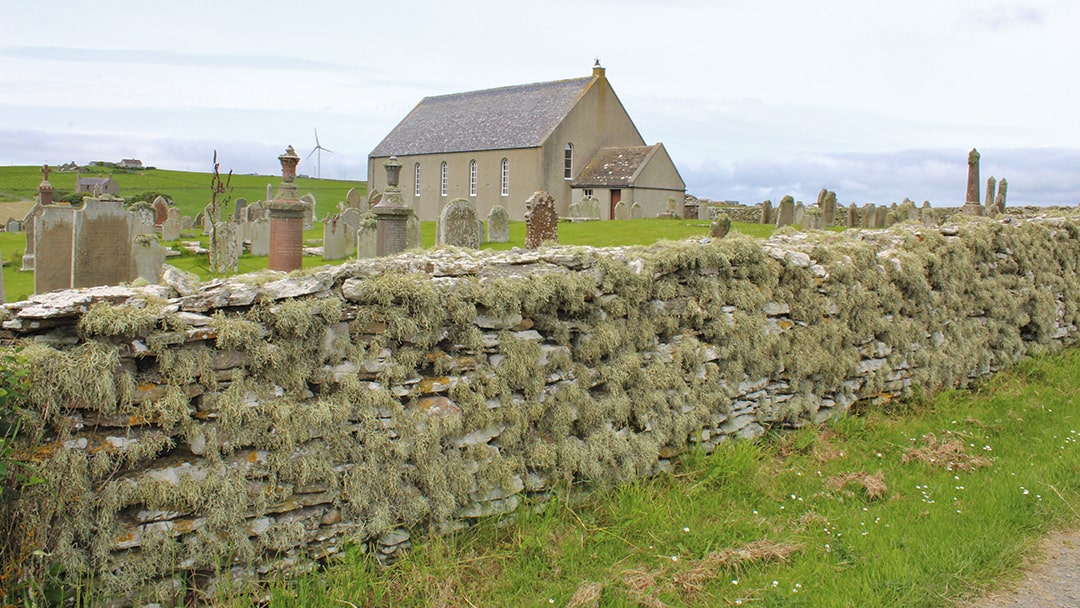
From here I took the coastal road (approximately 5 miles) around the rest of the island and back to the ferry. This would take me past; the lovely beach at Kirk Bay, a kirkyard with a hairy lichen-covered wall, a picnic bench where I ate my sandwich and admired a fine view of the uninhabited island of Switha, and eventually, another wartime coastal defence – Innan Neb, Gate and Neb Batteries. I learned that amongst the buildings here, there was a tennis court, and that camp supplies were delivered by sea.
Now following a tarmac road, I was treated to a great view of Hoy and the Martello Towers. These were also coastal batteries, but from an earlier time, and another war.
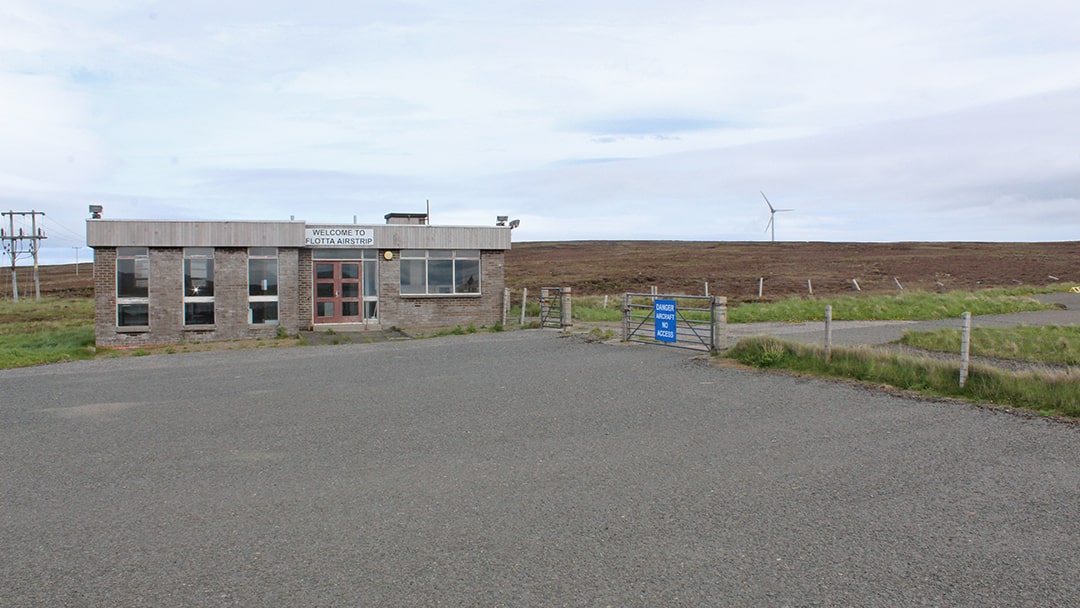
After a long walk along a road surrounded by dark heather, I eventually reached Flotta’s lonely airstrip. The 600m long runway was for oil terminal staff but I was unsure as to whether it was still in use. The building at the airfield looked very ancient, but some of the signage looked new. There was no one around the airfield and it felt a little eerie.
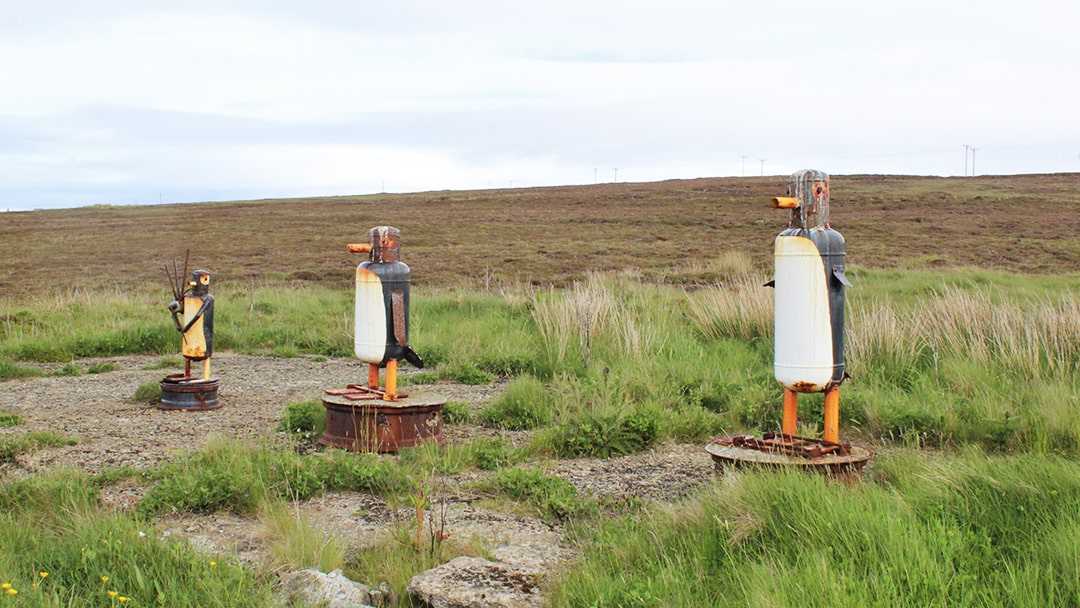
My time was running out on Flotta, and the pier and ferry weren’t far away. On my way I passed an amazing art piece – a family of penguins (one was playing the bagpipes) built by talented islander Tom Sutherland, out of odds and ends. There is more recycled metal art to be found on the island, including a penny-farthing bicycle and a WW2 Doodlebug, and I must return to seek it all out!
As I left Flotta I was pleased to have made the journey to this under-appreciated island. Orkney is celebrated for the ease in which you can see its history, at places like the Ring of Brodgar and Skara Brae. The same can be said for Flotta, an island of crofts, which accommodated wartime troops and North Sea oil, and proudly wears that history on its sleeve for all to see.
 By Magnus Dixon
By Magnus DixonOrkney and Shetland enthusiast, family man, loves walks, likes animals, terrible at sports, dire taste in music, adores audiobooks and films, eats a little too much for his own good.
Pin it!